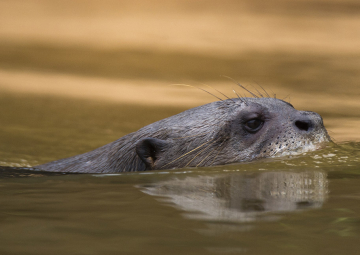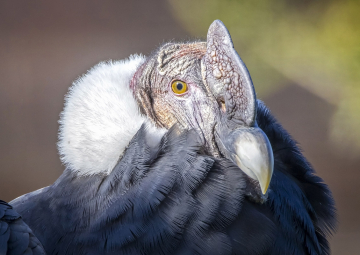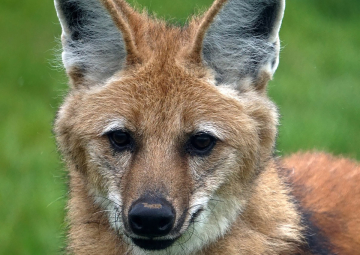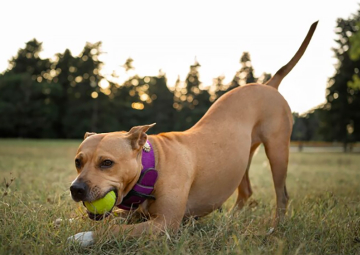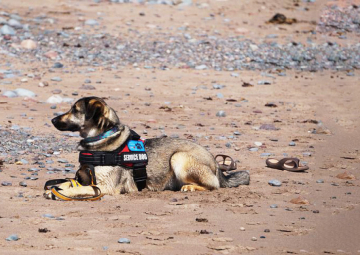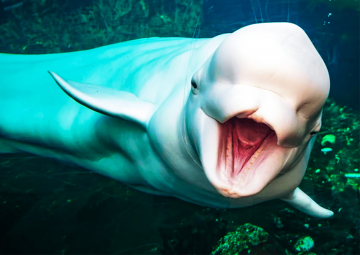Land mammals
Benefits of Teaching and Learning Offspring

Jorge Iván Sánchez Quintero is a biologist and animal trainer. He graduated from the University of Caldas (Colombia) and has presented numerous lectures (as a speaker and lecturer) in Colombia and Latin America on conditioning and animal training for the welfare of animals under human care.
He is currently the creator and administrator of his own company, Mono Lanudo Pet Shop. Jorge has participated in talks and consultations for various institutions in Latin America and contributed to the development of the animal training and environmental enrichment program for the Cali Zoo in Colombia. He was a member of the IAABC Spanish, the International Association of Spanish-speaking Animal Behavior Consultants and has written several articles for the journal of the same institution.
Esteban Marín Sánchez is a biologist from the University of Caldas. He conducted his undergraduate thesis on the training of New World primates at the Cali Zoo Foundation. Born in the city of Manizales (Colombia), Esteban is passionate about the management and conditioning of animals, their welfare, care, rehabilitation, and conservation.
Introduction
He is currently the creator and administrator of his own company, Mono Lanudo Pet Shop. Jorge has participated in talks and consultations for various institutions in Latin America and contributed to the development of the animal training and environmental enrichment program for the Cali Zoo in Colombia. He was a member of the IAABC Spanish, the International Association of Spanish-speaking Animal Behavior Consultants and has written several articles for the journal of the same institution. Esteban Marín Sánchez is a biologist from the University of Caldas. He conducted his undergraduate thesis on the training of New World primates at the Cali Zoo Foundation. Born in the city of Manizales (Colombia), Esteban is passionate about the management and conditioning of animals, their welfare, care, rehabilitation, and conservation.
Traumatic or abusive process
This is the most common concept people have when they see a baby being pricked with a needle, basing this argument on their experience with the pain-related behaviors that babies commonly exhibit when in contact with a needle. For the same reason, it is believed that a baby and a needle are incompatible. Still, thanks to conditioning processes, we can change this and make it a routine and a less significant stimulus for which the animal does not need to react negatively. Moreover, thanks to these techniques and the application of science, we can teach what animals need and what we need for their proper management and well-being. Now I ask you: Could you believe that an animal, for example, a carnivore like pumas and otters, can be taught not to bite a person's hands? (zookeeper or animal trainer). Remember that these animals are equipped with a strong, secure, and firm bite capacity, as their survival success depends on it. Therefore, thinking about being close to these animals is aggression and certain death. Thanks to early-age teaching, animals can learn to discriminate between what they can and should bite and what they should not. In this case, the individual is taught that hands are for responding to signals, contacts for handling, and even caresses, but they are not prey, toys, or food (fig. 1).
This does not mean that by teaching these behaviors, the animal under human care should be in direct contact throughout its life (remember that when animals that can pose a risk to human life grow, they have the ability to do a lot of harm). Therefore, handling in protected contact is necessary and recommended for the safety of both staff and animals. Additionally, it is essential to teach not only the relationship or socialization with humans but also with individuals of the same and even different species to facilitate processes of approach and enable them to live in pairs or groups, strengthening their well-being.
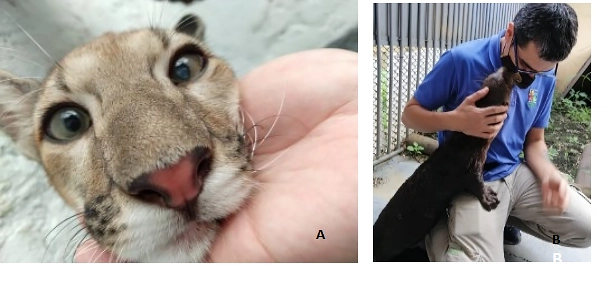
Figure 1: Training not to bite the caregiver's hands to achieve a better approach and facilitate the various types of care they may need throughout their lives, A Puma concolor, B Pteronura brasiliensis.
When we have animals under our care, it is necessary to teach them behaviors that will favor their own management. It is crucial that they participate voluntarily in the processes to collect samples that clearly indicate their current health status (fig. 2). These types of handling directly influence animal welfare and improve their quality-of-life day by day (Burghardt, 2006; Mellor et al., 2015; SERFOR and WCS, 2017)..
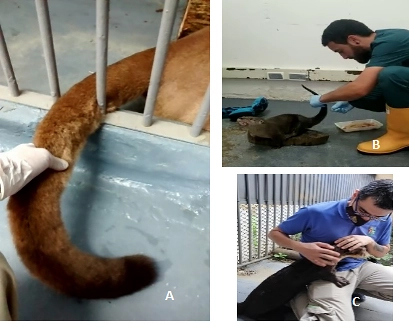
Figure 2: Voluntary participation in different processes to collect samples or assess their current state. A and B Tail desensitization to facilitate blood sampling in Puma concolor and Lontra longicaudis, C Body evaluation in Pteronura brasiliensis...
The benefits of classical conditioning and operant conditioning, especially in the teaching and learning of offspring.
Applying the science of classical conditioning allows us to stimulate the animal from an early stage (sensitive age or sensitive stage). At this age, the animal will absorb and acquire all the information provided to support everything related to its care by humans, such as assisting in its medical, nutritional, daily routine, and general well-being management (fig. 3). For example, touching the mouth, eyes, tongue, ears, neck, pinching, pulling hair, touching limbs, pulling the skin, touching the abdomen, and touching the anus or cloaca (fig. 4). This prepares the individual to allow future actions such as taking its temperature, conducting body evaluations, collecting samples, exams, cytologies, or various required treatments. All of this provides information to the animal, helping it become accustomed to different stimuli, essentially representing what the individual's mother would do during this sensitive stage. One of the main objectives is for animals to respond positively to exercises, minimizing the need for chemical and/or physical restraints, which often cause high levels of stress, integrity and health problems, as well as negative learning that will be remembered and may lead to aggressive behaviors by the animals (Jácome, 2012; Sánchez, 2012; Camacho y Gómez, 2015; Hincapié, 2019). Now, the use of positive reinforcement (an operant conditioning procedure that increases the probability of a behavior recurring in the future by presenting a desirable stimulus) as a technique to modify an animal's behavior is superior to other methods because it makes them genuinely want to perform the behaviors (Herrera et al., 2004; Coca, 2014; Carter y Shieh, 2015). Therefore, this technique directly improves the relationship between the animal and the caregiver, associating the person with a positive experience (getting what they want), in addition to the stimulating experience provided by the training sessions. The animal will want to be close to the caregiver because of the rewards they represent (Irwin et al., 2013).
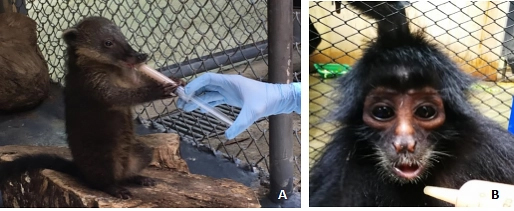
Figure 3: Syringe desensitization and habituation to different flavors, preparing animals for medication delivery, allowing them to voluntarily cooperate with various care procedures and strengthen the caregiver-animal relationship. A: Nasua nasua, B: Ateles fusciceps..
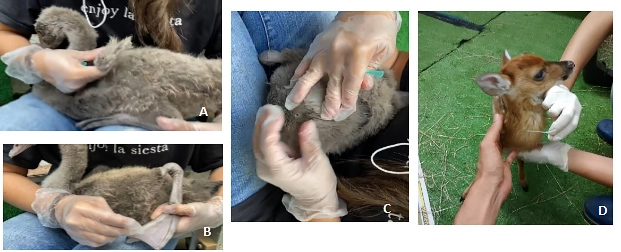
Figure 4: A and B, Progressive habituation and desensitization to contact with a blunt-tipped needle in black swan (Cygnus atratus) and white-tailed deer (Odocoileus virginianus). C Progressive habituation and desensitization to cloacal stimulation in Cygnus atratus.
Love and Well-being
Always considering the premise of love for animals and their well-being, we define the term of promoting purposeful contact in infants: understanding that we have to touch the eyes, ears, tail, abdomen, etc. since future routine, medical, and nutritional procedures will be performed. It is important, then, that individuals from this age confront and internalize the information provided to them, such as entering a transport box or kennel (fig. 5) and climbing onto the platform or scale for weighing. The processes described above can be trained through passive or active desensitization.
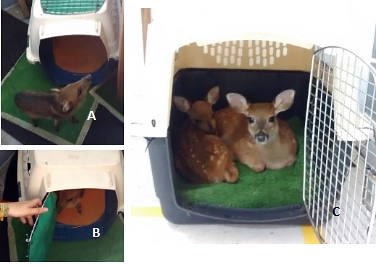
Figure 5: Transport cage or kennel), A y B Pecari tajacu C Odocoileus virginianus.
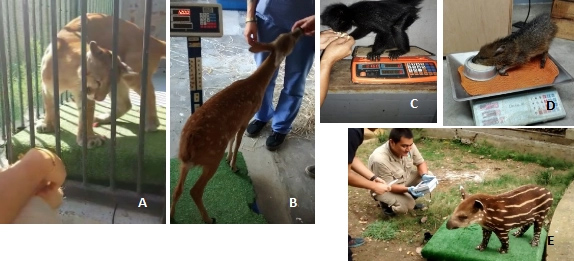
Figure 6: Implementation of weighings with positive reinforcement from a sensitive stage A: Puma concolor, B: Odocoileus virginianus, C: Ateles fusciceps, D: Pecari tajacu, E: Tapirus terrestris. A solid start to a story of positive reinforcement-based conditioning and a trainer-animal relationship is crucial in animal care.
For every behavior, there are four possible outcomes or consequences, two of which lead to reinforcement, and two correspond to punishments (Carranza, 2000; Laule et al., 2003). Skinner uses positive attributes, namely (positive reinforcement and positive punishment), and negative attributes (negative reinforcement and negative punishment) (Howery, 2007; Guerra y Silva, 2010). These attributes do not mean good or bad. Positive means adding something to the environment (reinforcement), and negative means subtracting or removing something from the environment (Irwin et al., 2013). When thinking about operant conditioning, one must first determine whether one wants to increase a behavior that will be performed more frequently, such as allowing a medical evaluation (fig. 7) or nutritional management, or, on the contrary, reduce a behavior such as biting hands. Then, observe whether the stimulus is added or removed (Irwin et al., 2013). The easiest situation to understand is positive reinforcement. When the animal performs the desired behavior for the caregiver, it will receive what it wants. For example, if one wants a capybara (Hydrochoerus hydrochaeris) to allow itself to be touched so that its manipulation for body condition exams is easier in the future, because this herbivorous mammal is prey in its wild environment, it exhibits alert and shy behavior all the time, making it difficult for it to approach willingly for any type of procedure.
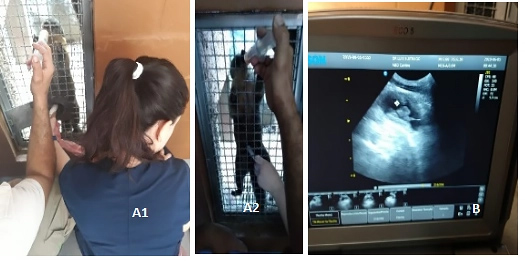
Figure 7: Coatis, trained to voluntarily participate in physical examination procedures, such as ear, eye, and mouth inspection, body condition evaluation, temperature taking, auscultation, weighing, and ultrasound. Conditioned animals commonly exhibit confidence and patience, which facilitates these types of procedures. A1 and A2 are diagnostic imaging tests, and B is an ultrasound of Nasua nasua.
Here is one way to approach the process of building trust and focus between a person and an animal. As the person begins to approach, they should introduce themselves, gradually assessing the critical distance (the distance at which the animal feels comfortable in the person's presence). The caregiver will then introduce themselves to the capybara, and as the capybara starts to approach and allows touching of its eyes, ears, mouth, limbs, etc., the caregiver will provide a reward (whether it's their favorite food, an item, or even affection). This is how the caregiver guides the desired behavior, such as approaching and frequent contact. The result of the capybara's behavior is that an ideal stimulus (food or affection like petting) is introduced into the environment. In figures 8 A, B, and C, you can see how the capybara cub enjoys the touch of the blunt needle, so much so that it looks like "a spa incorporating an acupuncture session." Generally, it is easier for the staff to care for animals when the animals allow them to approach, and this is more achievable when the animal associates the caregiver with pleasant things rather than unpleasant ones. If the caregiver's interaction with the animal involves the required stimulus, the animal will want the caregiver nearby instead of trying to avoid them.
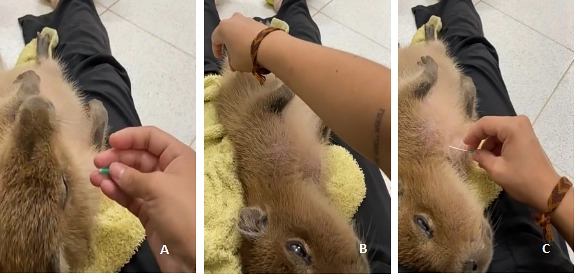
Figure 8: A, B, and C Habituation and progressive desensitization to contact with a blunt needle in Capybara (Hydrochoerus hydrochaeris).
The personnel working with animals should avoid the use of punishments (inflicting pain) through direct interaction with animals, as this can have aversive consequences. The use of punishment, such as hitting, causes frustration in the animal and may trigger aggressive behaviors towards the caregiver, potentially reducing or completely eliminating the animal's trust in people.
Animal training can be described as a system through which caregivers can communicate what they want the animals to do. If the caregiver has a clear vision for well-trained behaviors, effective communication is likely to flow, and established goals can be achieved (Irwin et al., 2013). The purpose of training is often to reduce animal anxiety under certain stimulation (desensitization) (Irwin et al., 2013).
Operant conditioning provides caregivers with a powerful tool that can enhance the lives of animals. Training can reduce stress in the daily handling and care of animals and caregivers. Fears related to medical procedures can be diminished or eliminated. Physical and mental stimulation can be used to increase animal well-being (Iversen et al., 1984; Laule et al., 2003). When animals learn to trust the caregiver, the relationship between them significantly strengthens, promoting the smoothness of the communication system provided by reinforcement, primarily positive. The caregiver becomes more attuned to the animal's behavior, better able to detect changes in its health, and more adept at meeting the needs of individuals under their care (fig. 8). Animals raised under these practices will become adults with exceptional management, reflected in their well-being throughout their lives in the conditions shared here. By being more effective in their work, the staff will find it more satisfying and beneficial (Kollikowski et al., 2019).
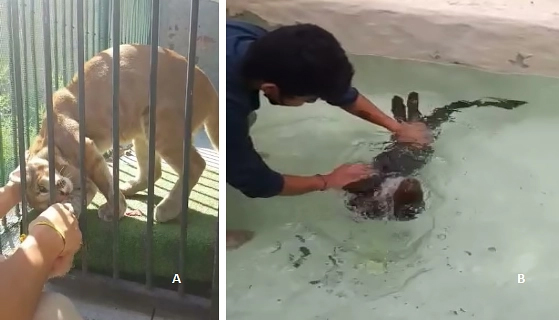
Figure 9: Bond between caretaker and animal, A Puma concolor B Lontra longicaudis
__
The individuals mentioned below were part of the conditioning processes and shared some of the images presented here: Alexandra Bastos Cacua, Brando Efrén Pinzón, Daniel Pardo Esguerra, David Suaza Sepúlveda, Diego Armando Pozo Gómez, Elías Silva Rebolledo, Helen Dayana Villalobos Bonilla, Jessica Paola Guzmán Morales, Juan Sebastián Arévalo Cantor, Natalia Ipiales Rivera, Paola Andrea Escobar Dorado, Victoria Torres Daza, and, in general, the entire team that makes up the Animal Welfare Unit of the Cali Zoo. Additionally, we would like to express gratitude to the WeZooit team for including us and providing us with the opportunity to share this wonderful experience.
And remember, if it's possible... Wezooit!












